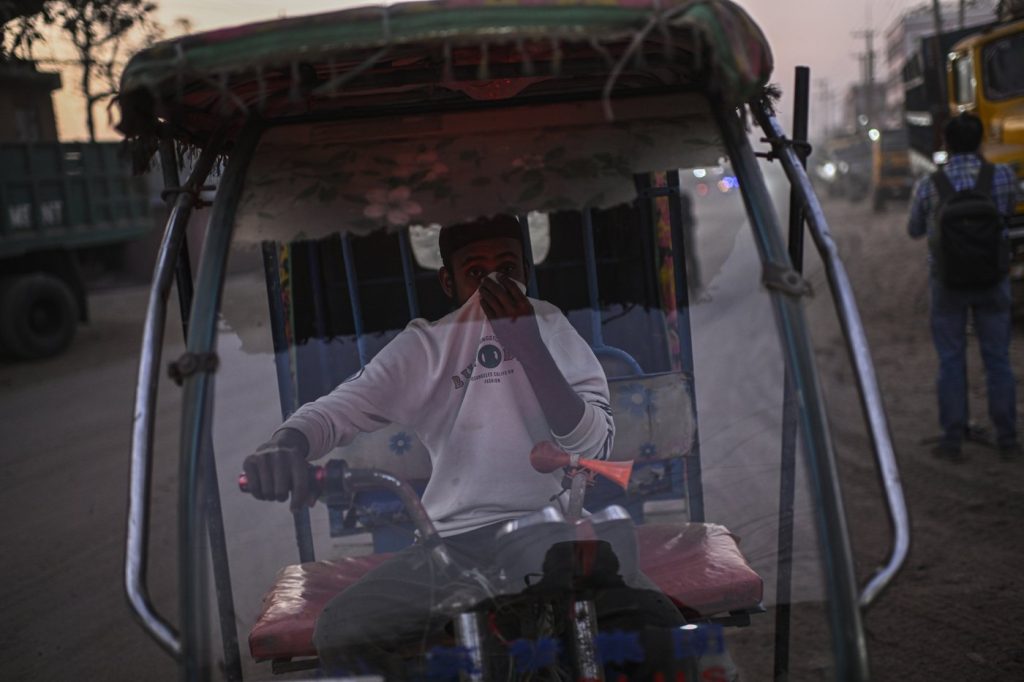HANOI, Vietnam (AP) The quest for fresh air is universal, but unfortunately, much of the air we encounter is heavily polluted. Air quality fluctuates widely across different regions and times, yet around 99% of people globally breathe air that fails to meet the stringent standards established by the World Health Organization (WHO). The United Nations health agency estimates that around 7 million individuals die prematurely every year due to polluted air filled with harmful gases and fine particulate matter that infiltrate human bodies.
For residents in some of the world’s most polluted cities, predominantly located in Asia, such as New Delhi, Dhaka, Bangkok, and Jakarta, the issue of air pollution may feel insurmountable. Tanushree Ganguly from the Energy Policy Institute of Chicago emphasizes that the presence of blue skies does not equate to clean air, warning that even when the atmosphere appears clear, harmful pollutants can still be present.
Air pollution primarily results from combustion processes. Common sources include burning fossil fuels like coal, natural gas, diesel, and gasoline for energy and transportation. Other contributors encompass the incineration of agricultural waste and deforestation for agricultural purposes, as well as emissions from wildfires. Among the most perilous types of air pollutants are fine inhalable particles known as particulate matter (PM), especially PM 2.5, which can penetrate deep into the lungs. Coarser particles, referred to as PM 10, usually arise from activities such as agriculture, roadwork, and mining.
Other dangerous air pollutants consist of gases, notably nitrogen dioxide and sulfur dioxide, predominantly resulting from fuel combustion. The characteristics and severity of air pollution differ from city to city and season to season. For instance, in Jakarta, old motorcycles and industrial emissions significantly contribute to the city's air quality issues, while agricultural waste burning is a major factor in air pollution spikes in Thailand and India. In Dhaka, brick kilns that burn coal exacerbate the pollution problem. Seasonal forest fires also pose challenges in countries like Brazil and regions of North America.
The health implications of air pollution are severe, being the second leading cause of premature deaths worldwide, following high blood pressure. Short-term exposure can provoke asthma attacks and elevate the risk of heart attacks and strokes, particularly in the elderly and those with pre-existing health conditions. Long-term exposure can lead to critical heart and lung ailments, including heart disease and chronic obstructive pulmonary disease.
Recent findings from UNICEF indicate that over 500 million children living in East Asia and Pacific nations breathe contaminated air, which is responsible for the deaths of approximately 100 children under five each day. UNICEF Regional Director for East Asia, June Kunugi, stated that the polluted air not only impairs growth and lung function but also has detrimental effects on cognitive abilities.
With more than 6,000 cities across 117 countries now monitoring air quality, many weather applications also provide air quality data, although interpreting these figures can be complicated. Numerous countries have instituted an air quality index (AQI), a numerical scale where higher numbers indicate poorer air quality, often represented in various colors. However, differences in national air quality standards can lead to discrepancies in AQI calculations, causing confusion among the public.
To mitigate the adverse effects of air pollution, it is critical to limit exposure, particularly during poor air quality episodes, by staying indoors or wearing masks. Nonetheless, for those who must work or operate outdoors, avoiding exposure is not always feasible. Individuals like Pakaphol Asavakomolnant, an office worker in Bangkok, wear masks daily and seek alternative transport methods to lessen their exposure to pollution.
Indoor air quality presents a separate threat, often compromised by everyday activities such as cooking. Air purifiers can help decrease indoor pollution, but they come with limitations, primarily being effective in small spaces and often unaffordable for many in developing nations. According to environmental advocate Danny Djarum, access to air purifiers remains a challenge for the majority of those afflicted by air pollution.










